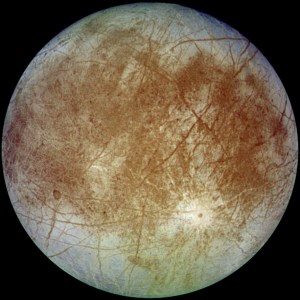I woke up to the very strange sight of sunlight for perhaps the first time since I got to Sydney. With the Future Mining Conference over, all of the talks today were focussed specifically on space.
The first presentation was a review of lunar resources by researcher Ian Crawford, a summary of his paper published in Progress in Physical Geography. With only one or two exceptions, Ian claims, there are no resources on the Moon that would be worth importing back to Earth. The real market would be to use lunar materials on the lunar surface itself, or to use them in cis-lunar space.
Helium-3, touted by many as the solution to all of our energy woes (and the subject of the sci-fi novel by the name of Limit, which I highly recommend despite its 1000+ page length!), is implanted into the lunar regolith by solar wind. But, it only exists at an average concentration of 4 ppb in the regolith. As such, Ian is very sceptical about the economic feasibility of extracting and returning He-3 to Earth. If you’ll allow me to paraphrase him:
“Assuming equal efficiencies, in 1.4 years, the same solar energy falls on 1 metre squared as would be obtained from extracting and processing all the helium-3 contained in the 3 m of high titanium regolith below it.” A rather damning statement.
Some areas of rare Earth elements (REEs) such as uranium and thorium are enriched in some areas, but REEs, despite their name, are not actually that rare, and are certainly not rare or valuable enough to warrant returning to Earth – UNLESS Earth-side supply dropped (e.g. it became too environmentally unfriendly to extract).
A large economy in cis-lunar space (e.g. science, infrastructure, transport, tourism…) may tip the economics over the edge to make lunar exploration and exploitation viable. Note that it takes much less energy to get to Moon escape velocity and down to geosynchronous Earth orbit (GEO) than it does to get to GEO from Earth’s surface. If Moon infrastructure were sufficiently developed, it could become far more cost efficient to build infrastructure in GEO using Moon resources.
This was followed up by Jim Keravala, Chief Operating Officer of Shackleton Energy, who gave us some idea of the infrastructure that might be built in GEO. Shackleton proposes that solar panels, which are much more efficient at collecting energy in space than on Earth, could be built and used to transmit wireless power back to a receiver on Earth’s surface. The energy is non-ionising and thus not a danger to life. This technology is feasible and demonstrated (for example), and can achieve energy transmission efficiencies of around 54%.
Kyle Acierno of iSpace, who are chasing the Google Lunar XPRIZE, gave a quick summary of their progress. The first prize of $20 million goes to the first non-government group to land a rover on the Moon, have it drive 500 metres and broadcast high definition video feed back to Earth. iSpace has developed a small, lightweight rover weighing just 4 kg (compared to the Curiosity Mars rover weighing in at around 900 kg!) to do just this. It is able to be so light because it is purpose built specifically for the prize goals, and contains no science equipment, and it uses 4 wheels instead of the standard 6 for rovers.
Winning the prize is the first step in a long-term plan to spend a swarm of lightweight, cheap rovers to the lunar surface to explore and demonstrate technology, eventually leading to resource extraction and the selling of scientific data. For information about their team and rover click here.

My favourite quote of the day was actually outside a presentation, and consisted of someone loudly exclaiming “No there is NOT more xenon than oxygen in the atmosphere!”
I found out today that the talks were actually live streamed, and you can find some of them here.
I immensely enjoyed the conference – it was a great chance to learn what is happening in the space resource utilisation industry and to meet and collaborate with fellow researchers. For anyone working in this space, or even just interested, I strongly recommend going to the next one in 2017.
Until next time (hopefully before 2017).












